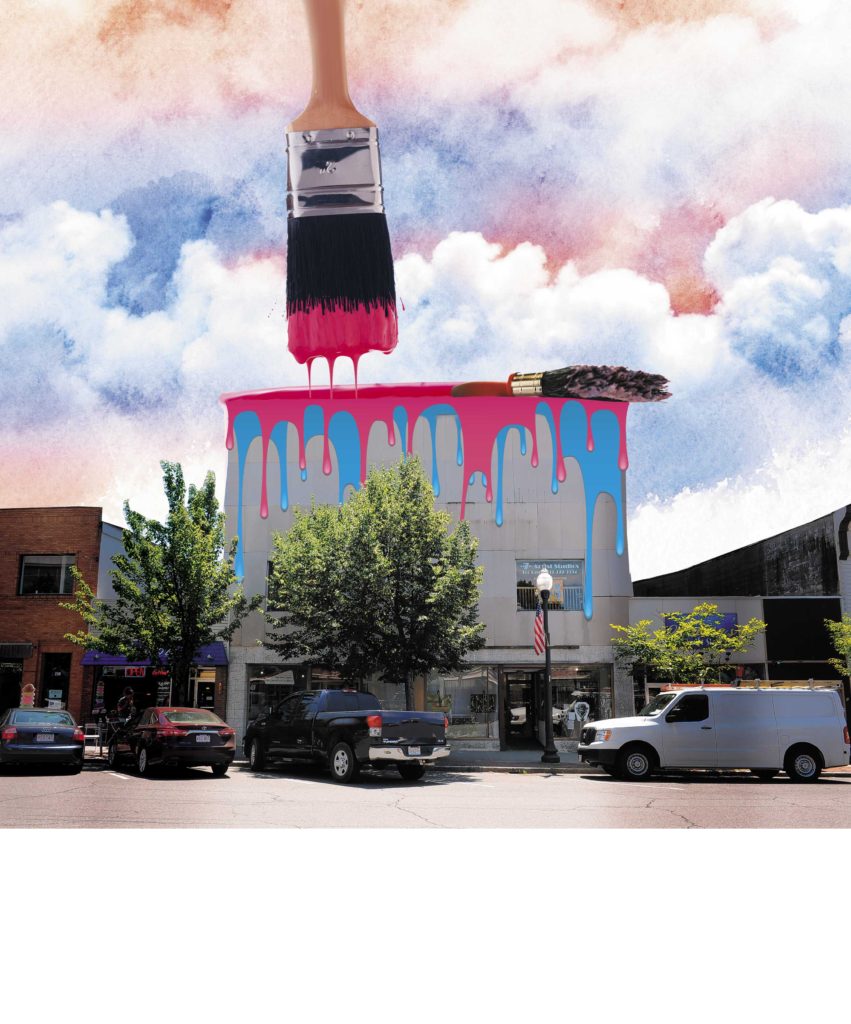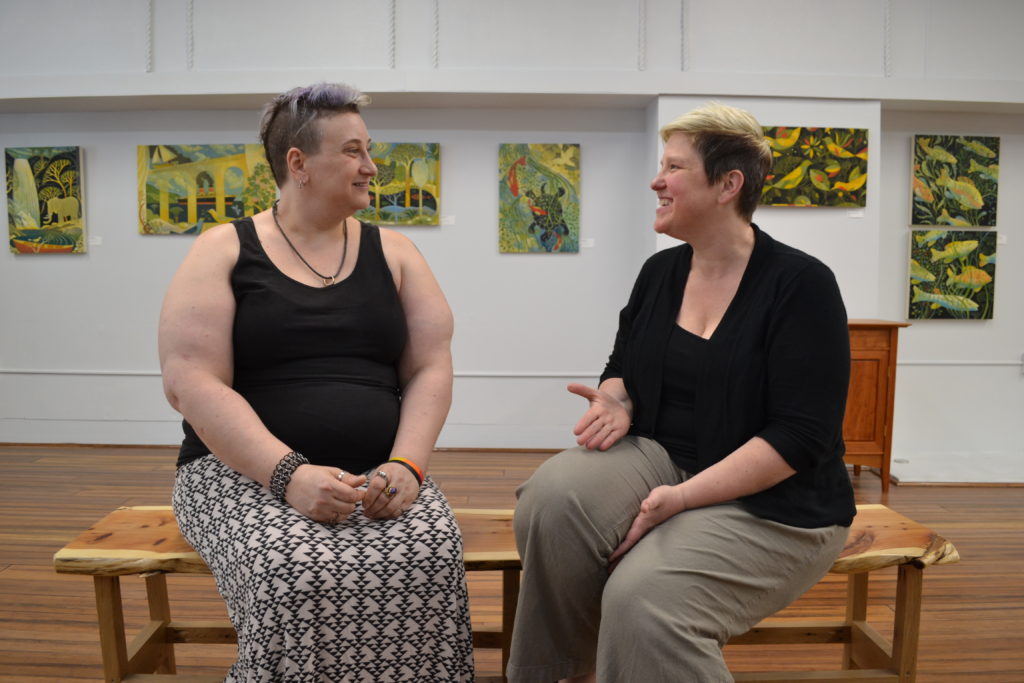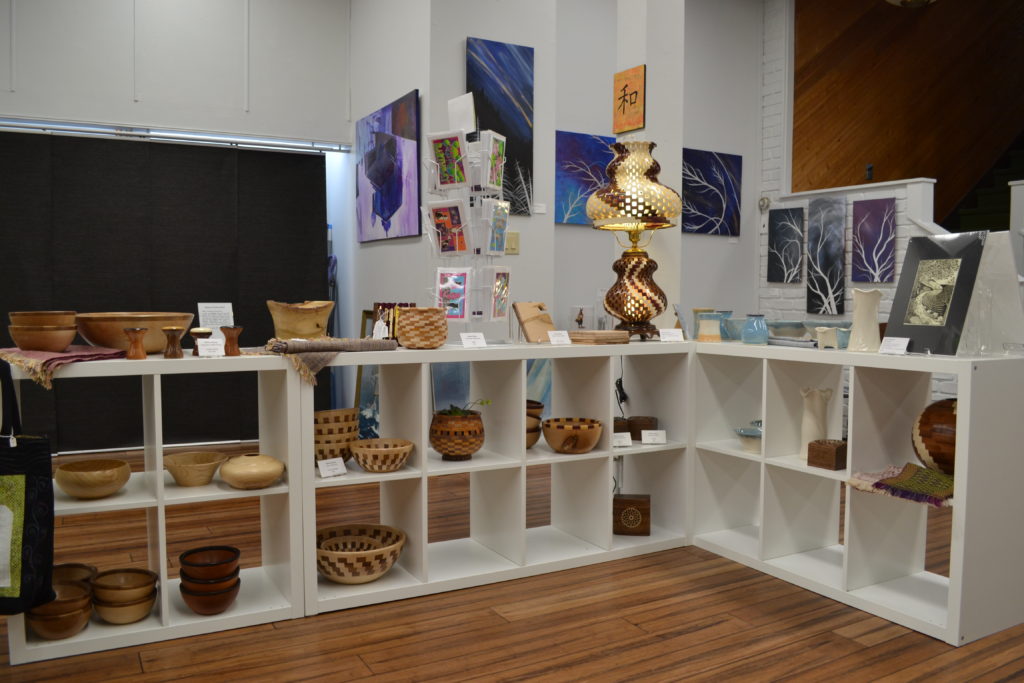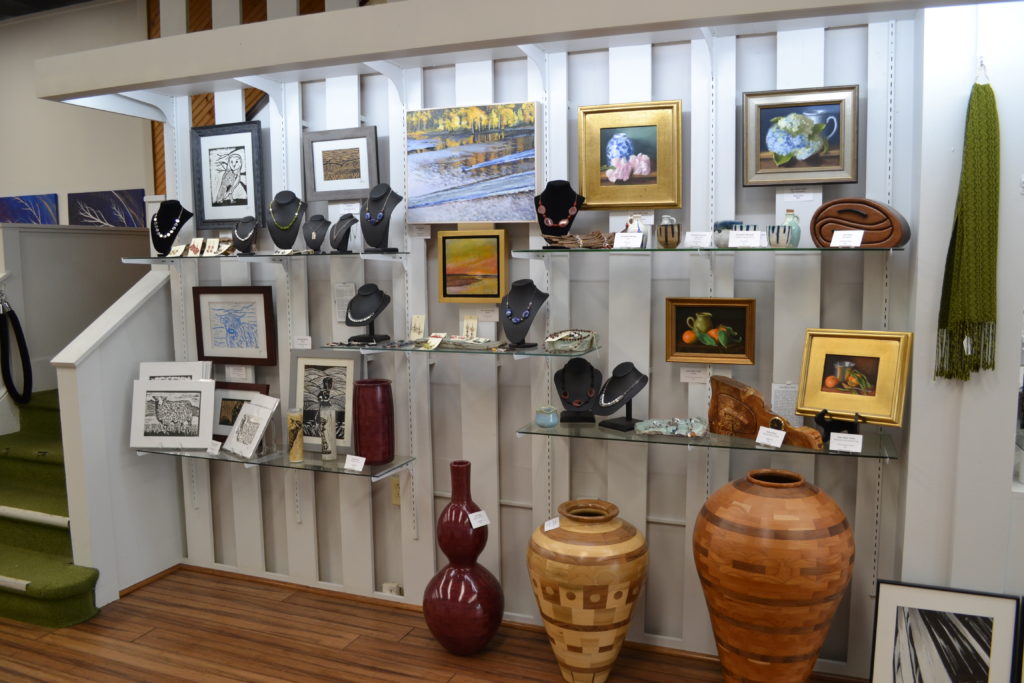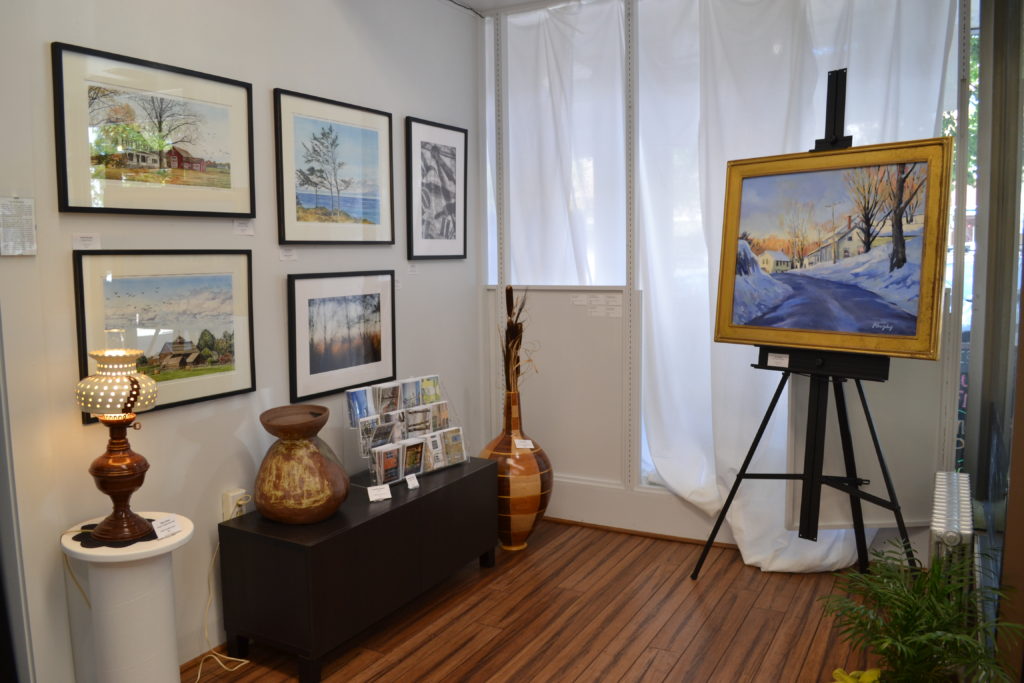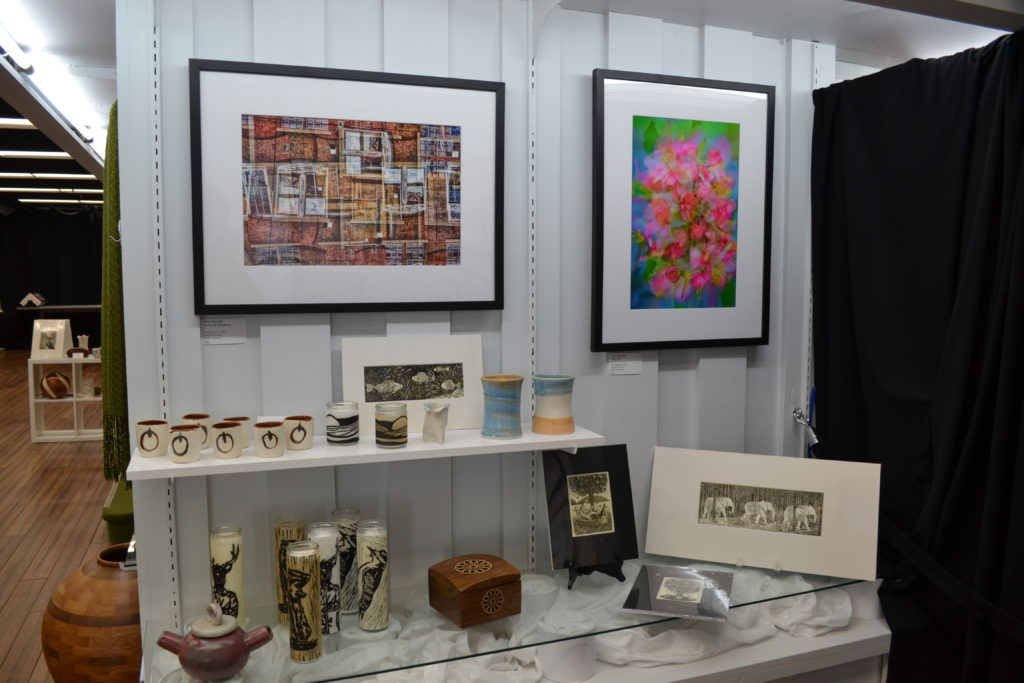On a cool Friday night in early May, guests filled the Greenfield Gallery to celebrate the abstract paintings of Greenfield artist Joseph McCarthy. About 60 people came through to chat over wine and cheese, and the gallery sold several works. When Rachael Katz and Kate Hunter closed the gallery at around 8 p.m., they were surprised to find Main Street alive and humming.
“We could hear this killer music, so before we went to dinner we walked to the Arts Block to check out a concert there,” Katz remembers. “It felt like a night in a small town, because we kept bumping into people we knew, but at the same time, there were things to do everywhere.”
That’s a special feeling in downtown Greenfield, where very little — beyond pizzerias, pubs, and bars — is open past early evening. When the stars occasionally align, and eclectic art events pop up on the same night, it creates “an incredible vibe,” Katz says. “The kind of thing you’d expect to find in Northampton or Amherst — it was here that night. I thought: We can really do this.”
By “we,” Katz partly means the city of Greenfield, which has struggled, in recent decades, to foster arts venues that draw local and out-of-town foot traffic. More specifically, Katz is referring to the Greenfield Gallery, which — if all goes according to plan — will help push downtown toward that tipping point.
Katz, an artist and entrepreneur with a degree in mechanical engineering, bought the former Rooney’s building — located at 231 Main St. — last March. She teamed up with Hunter, whose photography studio is now a primary tenant, to open the gallery in August. Since then, the walls have held art on a monthly rotation, often featuring two artists at a time, while the rest of the gallery displays works by more than a dozen other artists, from pieces as big as a handcrafted wood cabinet by Greenfield artist Bill Sheckels to items as small as thank-you cards and palm-sized gifts.
Does Greenfield have the walk-in audience needed to keep the lights on simply by selling exhibited art? Katz says she isn’t counting on that. “In Manhattan, you can have a fine art gallery that just puts expensive paintings on the wall. In Greenfield, that model is not going to work. So we’re trying to stay flexible.”
“Our mission is to foster an environment to make art happen,” says Hunter. “To bring more arts, and to have all of that in one spot.”
That spot is bigger than the 1,400 square-foot gallery on the ground floor. The three-story building also houses the studios of Katz and Hunter, eight artist studios — five of which are currently occupied— and a 50-seat performance stage and meeting space that has hosted events for the Full Disclosure Festival and the occasional karaoke or queer youth open mic night. Down in the basement, the Greenfield band Home Body rehearses regularly.
The gallery also provides printing, art reproduction, and photo restoration services. Most recently, Katz and Hunter have partnered with the Easthampton-based company Big Red Frame to bring custom framing services into the mix as well.
Katz is looking to brand the whole building, with all of its components, as Studio Seven. For now, though, it’s the ground-level gallery, with its new lighting, bamboo flooring, and artworks in the windows, that draws the most attention.
“When I moved here, I saw a town with tremendous potential that needed a spark,” Katz says. “Out of all of these manufacturing and mill towns that lost their base, those that have come back have done it by capitalizing on the creative economy. I could sense the creative energy in this town, and I wanted to put out a big beacon that says: Art Here.”
Katz and Hunter both live in Greenfield, and Katz says that several of their tenant artists live within walking distance of the studios. “Turns out there’s a lot of talent in and around Greenfield,” says Katz, adding that the gallery juries all submissions and gives preference to local artists. “Artists had been taking their work to Shelburne and Amherst to display. When we provided a venue for local artists to display in their home town, they started to flock here.”
Ultimately, it will be a combination of art sales, the printing, framing, and art reproduction services, revenue from live events, and rent paid by the gallery and the building’s tenants that will help Katz to keep up on her bills. Buy-in from local businesses on an Interstate 91 billboard, enticing cars off the highway for a stop-over in a growing downtown shopping district — wouldn’t hurt either.
“When you put all of those pieces together, it’s not a cash cow,” Katz says. “But we only just have to make it. It’s art, right? Art and capitalism aren’t the best of friends on a good day.”
Co-managing the gallery does take weekly hours away from running her photography business, Hunter points out. “So, we’re not expecting to make any money at the moment on the gallery, but it would be nice to see that change.” The gallery has had a few seasonal interns so far, and hiring another paid position or two seems to be in the works.
The most steady factor in this endeavor, happily, is the art itself. The gallery has booked monthly exhibiting artists through the beginning of 2017. “We’re not even putting out calls,” Katz says. “Artists are now just walking in.”
Day to day, the gallery will continue to face challenges as it approaches its one-year anniversary this summer. Rent comes due, bulbs need replacing, and tenants will come and go. What keeps Katz and Hunter committed to the project is the opportunity to lead by example, and raise the spirits — and regional profile — of a town with a lot to offer.
Sometimes, the effect is profound even when it appears small. Hunter thinks of one recent moment in particular, when a woman stopped in simply to appreciate a Main Street that is, slowly but undeniably, changing. “She just walked in and looked around,” Hunter says, smiling, “and said to us: ‘I just need to be in a nice, quiet place with beautiful things.’ ”•
Contact Hunter Styles at hstyles@valleyadvocate.com.

